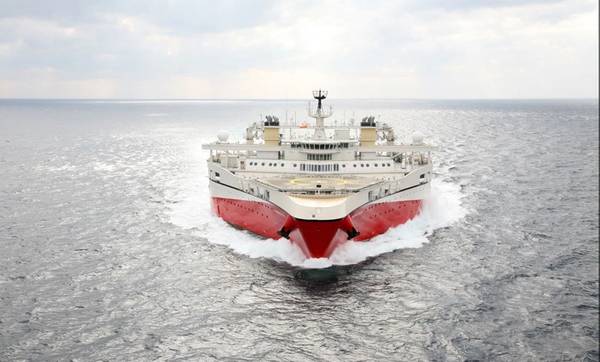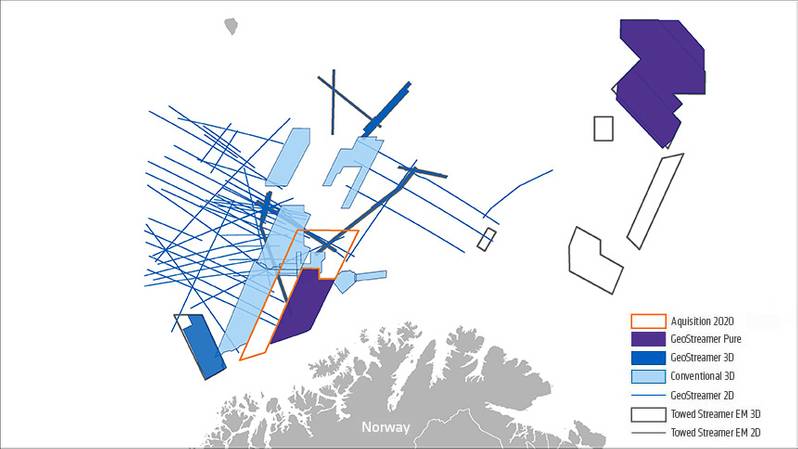
Norwegian seismic acquisition company PGS has started an ultra-high-density seismic survey in the Barents Sea.
The survey extends Hammerfest Basin coverage further west and north into the southern Loppa High. The first data will be available Q4 2020, the company said Monday.
"The acquisition geometry builds on the innovative configuration previously applied on the PGS18004NBS survey, applying a wide-tow source configuration in combination with a tailored ultra-high-density GeoStreamer setup," PGS said.
"This season, PGS promises to obtain even more near offsets by extending the survey geometry used on the 2018 acquisition to push the towing limits achievable from a single vessel," the company added.
PGS is using the Ramform Tethys seismic acquisition vessel for the operation. The vessel is operating a dense, 16-streamer spread of variable lengths, with 56.25 m separation, including a sparse set of 10 km long streamers for FWI-based velocity model building.
 Caption: According to PGS, the ultra-HD3D intelligent towing configuration is designed to address the specific imaging challenges of Barents Sea: the modified front-end optimizes the near-offset distribution, while the long tails record refractions and diving waves for improved velocity model building using FWI.
Caption: According to PGS, the ultra-HD3D intelligent towing configuration is designed to address the specific imaging challenges of Barents Sea: the modified front-end optimizes the near-offset distribution, while the long tails record refractions and diving waves for improved velocity model building using FWI."This technical set-up, which includes wide-source spread, high-density streamers, and long tails for FWI, has been tailored for the precise imaging of extremely shallow targets without compromising illumination of targets at deeper levels," PGS said.
“Efficiency and accuracy are required for successful exploration in the Barents Sea. The advanced design and technology offered by the Ramform Tethys will deliver both, and result in a superior dataset for this challenging and prospective area,” says Gunhild Myhr, VP New Ventures Europe at PGS.
The survey area includes open acreage included in the APA2020 and held acreage.

Acquisition has begun on PGS' 2020 Hammerfest Basin Extension project. PGS20001NBS, marked with an orange outline, will cover parts of the southern Loppa High and a portion of the Hammerfest Basin west of PGS18M04NBS.


